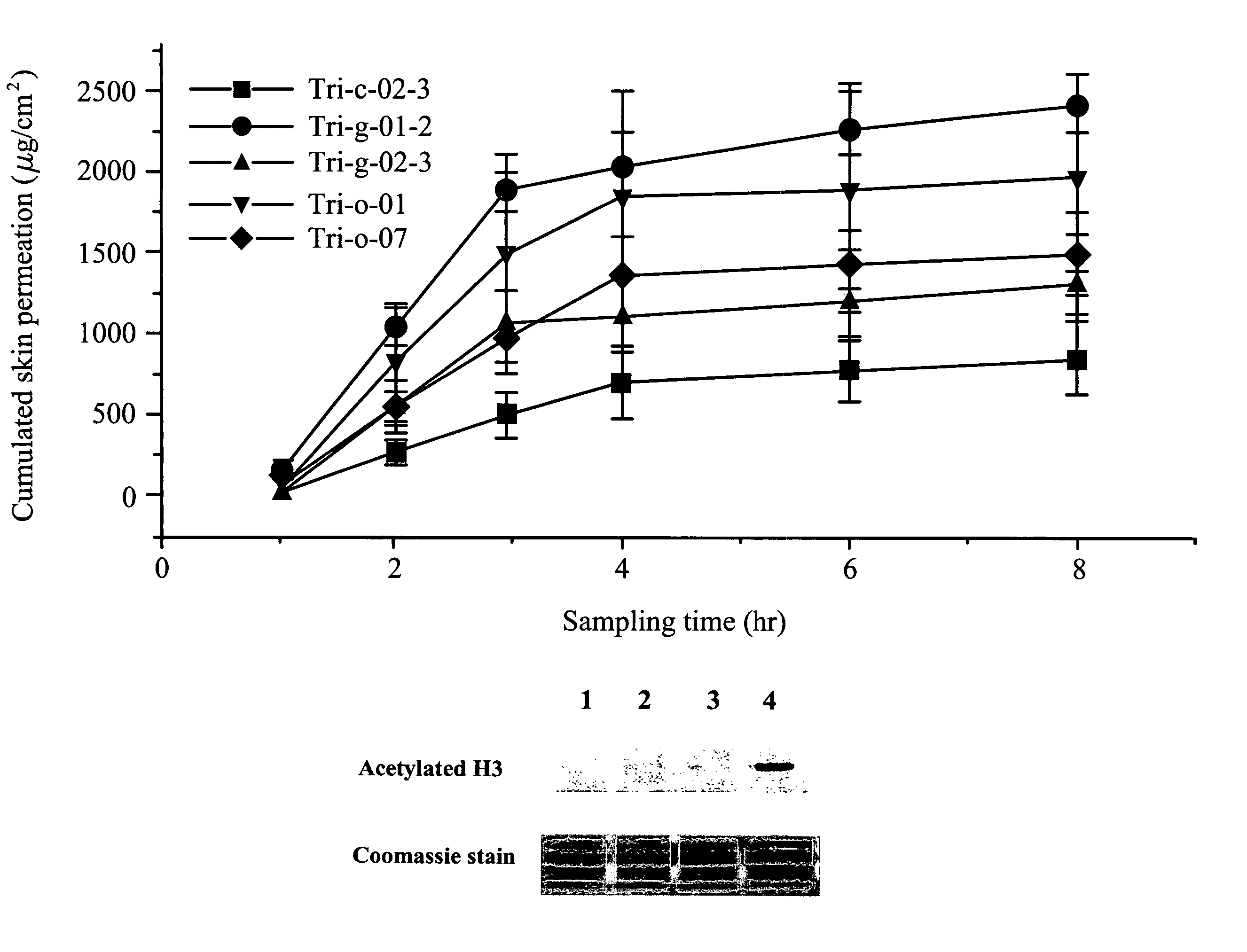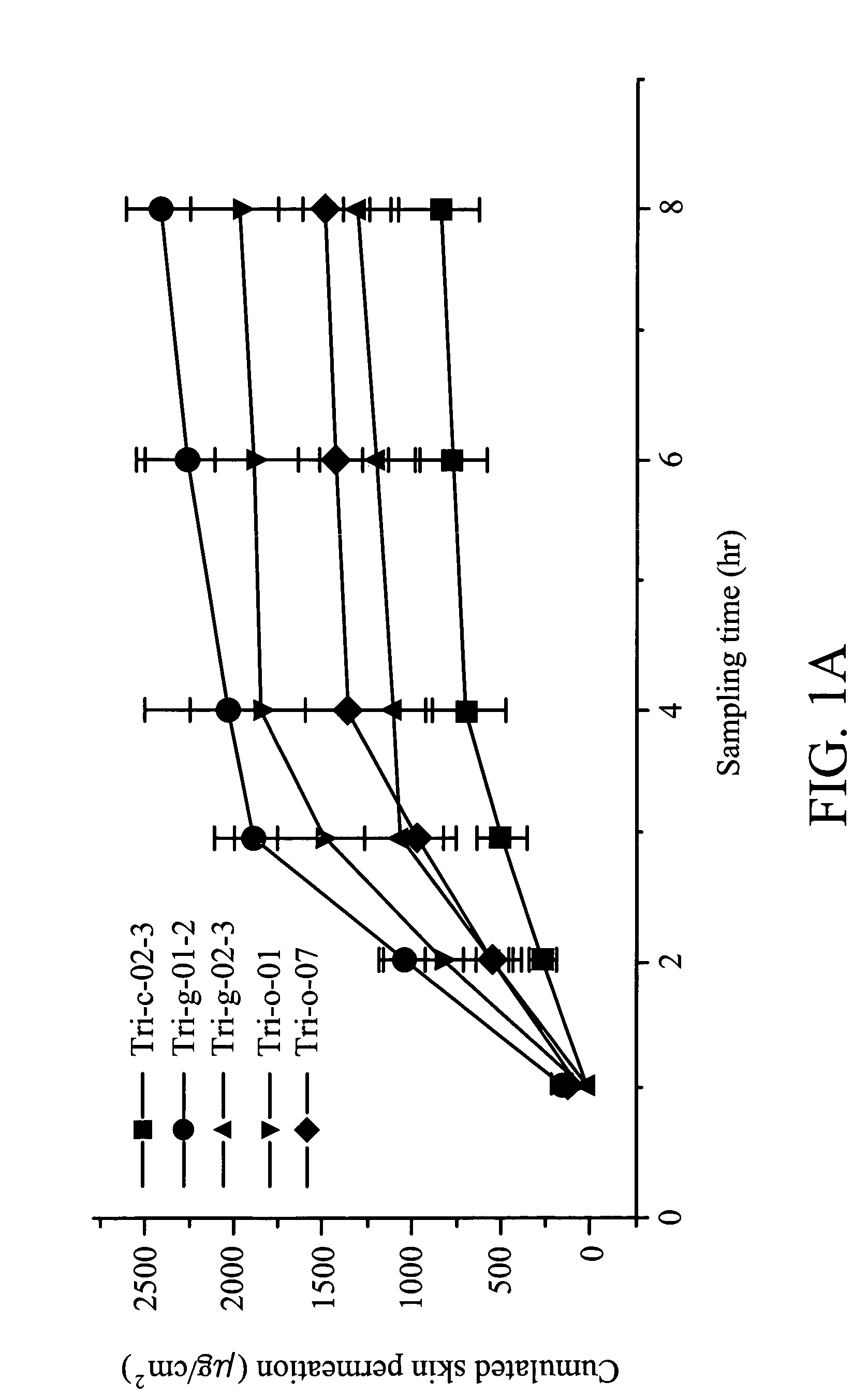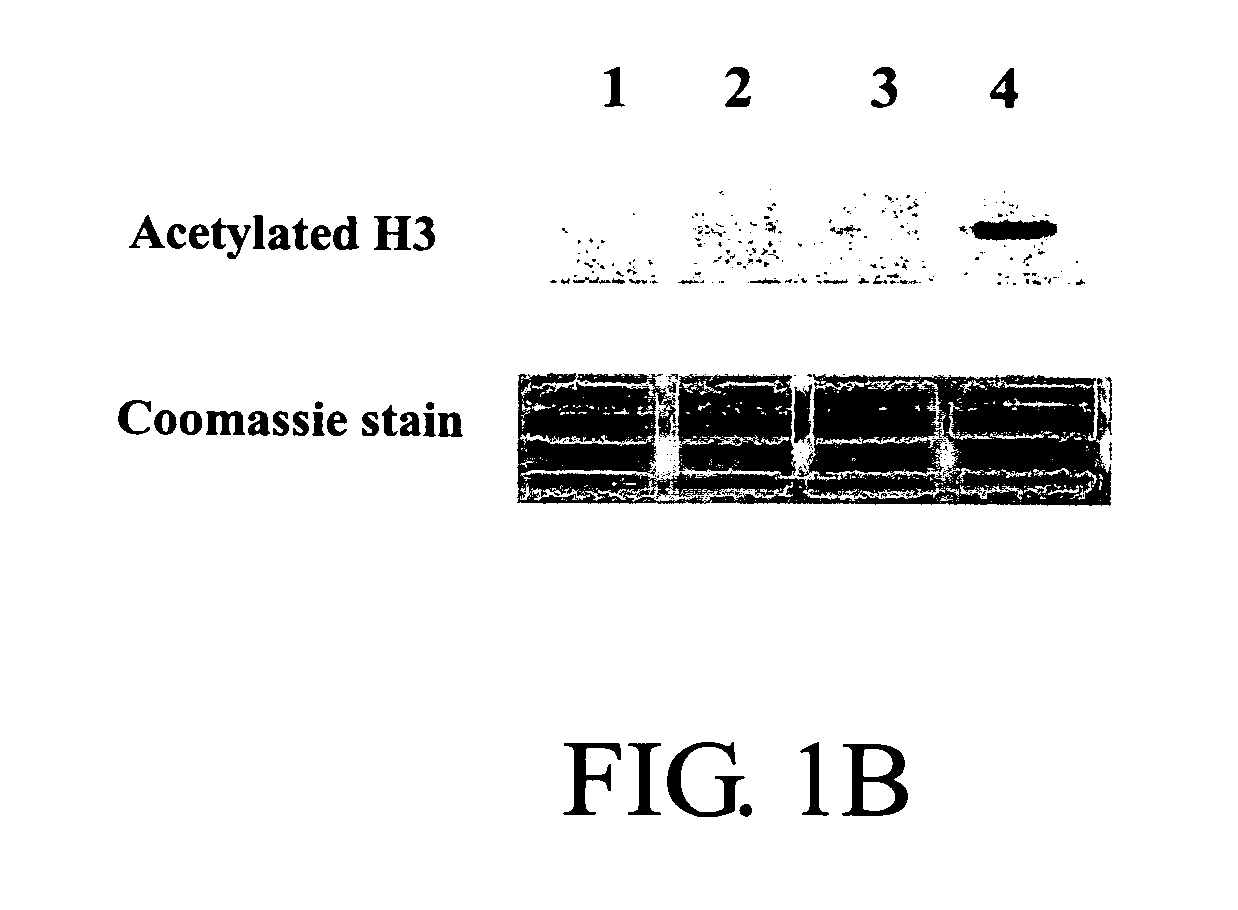Method for reducing radiation-induced normal tissue damage
a radiation-induced normal tissue damage and radiation-induced chemotherapy technology, applied in the direction of angiogenin, drug compositions, aerosol delivery, etc., can solve the problems of limited therapeutic benefits, inability to simultaneously ameliorate, toxicities, side effects, etc., to reduce radiation-induced normal tissue fibrosis, and enhance tumor suppression
- Summary
- Abstract
- Description
- Claims
- Application Information
AI Technical Summary
Benefits of technology
Problems solved by technology
Method used
Image
Examples
example
Example 1
Various Topical Compositions-Oleaginous Ointment, Cream, and Gel
[0043]A. Preparation of an Oleaginous Ointment of Phenylbutyrate:
[0044]470 g of white petrolatum (Riedel-de Haen), 25 g of paraffin wax 50 / 52 (local supplier), and 5 g of 4-phenylbutyrate (Merck) were mixed in a beaker and heated at 70° C. to form a paste. The paste was stirred at 400 rpm for 1 hour, and then cooled at room temperature.
[0045]B. Preparation of an Oleaginous Ointment of Phenylbutyrate:
[0046]65 g of white petrolatum (Riedel-de Haen), 15 g of cetyl alcohol (Riedel-de Haen), 260 g of soft paraffin (Merck), 155 g of liquid paraffin (Merck), and 5 g of 4-phenylbutyrate (Merck) were mixed in a beaker and heated at 70° C. to form a paste. The paste was stirred at 400 rpm for 1 hour, and then cooled at room temperature.
[0047]C. Preparation of Cream of Phenylbutyrate:
[0048]Part I: 70 g of Tefose 63®, 20 g of Superpolystate®, 10 g of Coster 5000®, 15 g of Myriyol 318®, 15 g of Coster 5088®, and 15 g of GMS...
example 2
Topical Phenylbutyrate (Pb) Treatment Induces Histone Hyperacetylation In Vivo
[0072]As shown in Table 2, several phenylbutyrate (PB) formulations were characterized.
[0073]
TABLE 2Formulation characteristics and pharmacokinetics parameters*PB (1%)Tri-c-02-Tri-g-01-Tri-g-02-Formulation323Tri-o-01Tri-o-07StabilityGoodgoodgoodgoodPoorShelf-life83.910.823.92.06.1(mo)SkinNoNoNoNoNoirritation1Slope219.9873.5491.7709.25452.82Y Intercept−198.3−740.7−442−649.4−400.73Retention0.9020.8480.8990.9160.885time4Constant1.181.261.191.161.215Cs1.495.563.324.873.016μg / cm2594.82222.21326.11948.21202.17mg / cm374278166243150*c: cream; g: gel; o: ointment;1slope, indicating the permeation amount of each drug through skin per hour (μg / cm2 / hr);2Y intercept (μg / cm2): a negative number indicating the potential permeation amount of each drug through skin, a positive number indicating that the sampling time is too long to obtain an accurate value;3retention time, indicating the average time (hr) that drug spends t...
example 3
Histone Deacetylase Inhibitors are Effective for Reducing Acute Radiation-Induced Normal Tissue Damage
[0075]Adult female Sprague Dawley (SD) rats were purchased from the animal center of the National Science Council of Taiwan, and weighed 250-300 g at the time of irradiation. Each rat was caged alone and allowed chow and water. They were anesthetized with pentobarbital 50 mg / kg i.p. before irradiation. The skin over gluteal area was shaved completely and radiation fields with 2-cm diameter were outlined with a marking pen just prior to irradiation. An electron beam with 6 MeV energy produced by a linear accelerator was used. The dose was delivered on Day 0 at 4 Gy / min up to 40 Gy to the prepared area. Each group treated with a histone deacetylase inhibitor was further divided into three subgroups animals (5 each): one subgroup treated with skin irradiation followed by vehicle, another with skin irradiation followed by a histone deacetylase inhibitor, and the third with skin irradiat...
PUM
| Property | Measurement | Unit |
|---|---|---|
| size | aaaaa | aaaaa |
| temperature | aaaaa | aaaaa |
| concentration | aaaaa | aaaaa |
Abstract
Description
Claims
Application Information
 Login to View More
Login to View More - R&D
- Intellectual Property
- Life Sciences
- Materials
- Tech Scout
- Unparalleled Data Quality
- Higher Quality Content
- 60% Fewer Hallucinations
Browse by: Latest US Patents, China's latest patents, Technical Efficacy Thesaurus, Application Domain, Technology Topic, Popular Technical Reports.
© 2025 PatSnap. All rights reserved.Legal|Privacy policy|Modern Slavery Act Transparency Statement|Sitemap|About US| Contact US: help@patsnap.com



